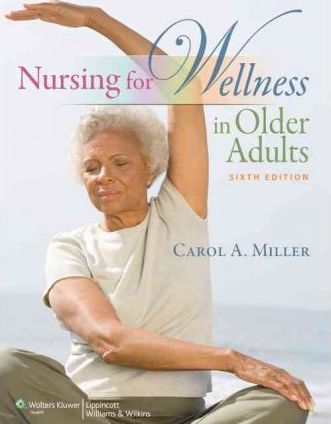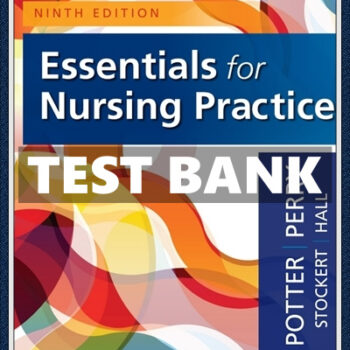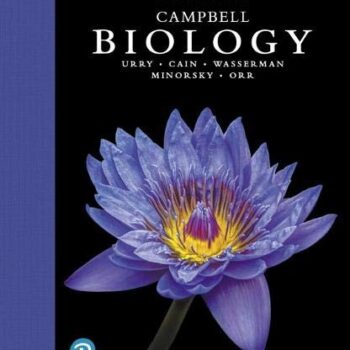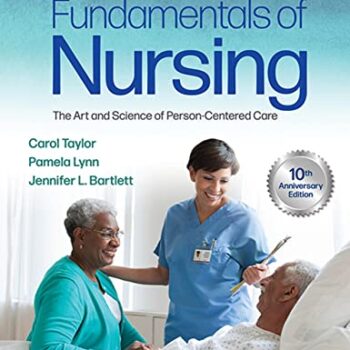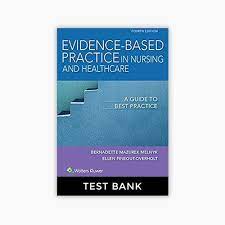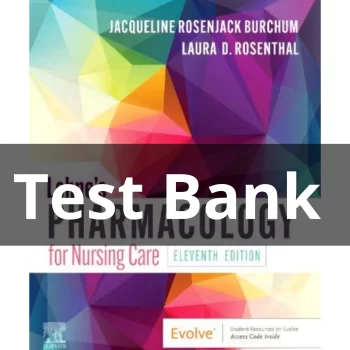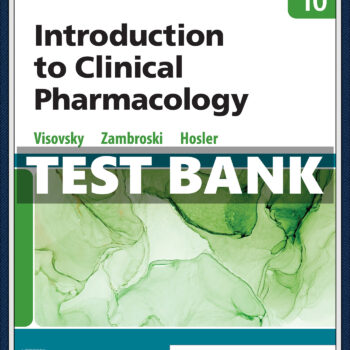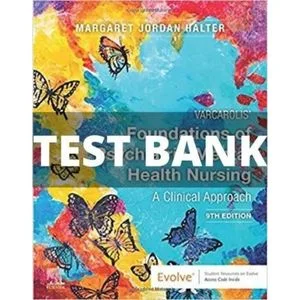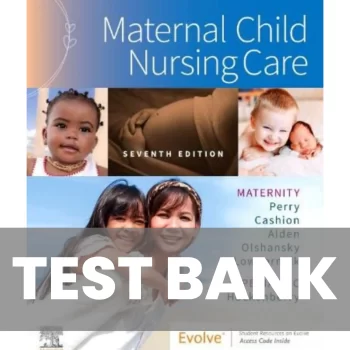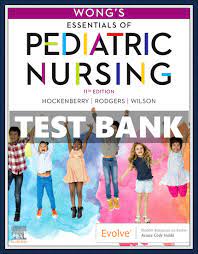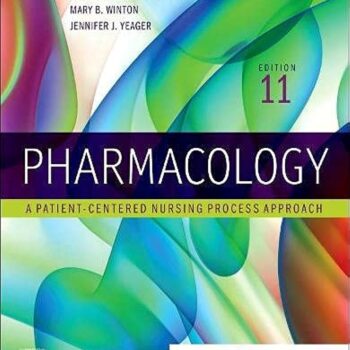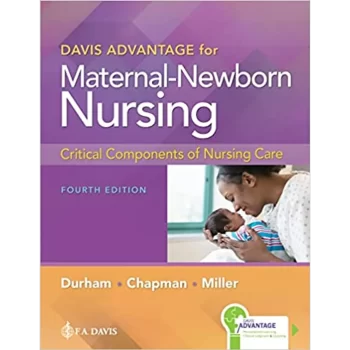We are pleased to present you with the Test Bank For Nursing For Wellness in Older Adults, 6th Edition by Carol Miller. This test bank assists both students and nursing professionals in their exams and their careers. The test bank focuses on comprehension of the nursing care concepts of older adults and the practice of wellness care and other relevant constructs. This test bank enables you to practice preparing for your exams comprehensively.
Why Choose Our Test Bank?
Test banks are helpful in any nursing program. It contains numerous questions on almost all the important aspects of caring for older adults through nursing. This function serves a beneficial purpose in that it makes you more aware of and thus less anxious about the sorts of questions that will come up in exams. This increases your level of preparedness. Our test bank is by the Nursing For Wellness in Older Adults textbook so you are practicing relevant questions.
Key Topics Covered
Wellness and Aging: This section presents the fundamentals of wellbeing for the aged population starting from the factors enhancing health and wellness among older people. This describes the factors surrounding health, well-being, and the sociological perspectives surrounding aging.
- Holistic Care: Comprehend the relevance of holistic care in nursing. This segment of the test bank focuses on the entire person and not just the specific illness. It contains approaches towards offering care that are both loving and all-inclusive.
- Chronic Illness Management: Learn how to cope with chronic diseases for the elderly. This section provides information on how chronic diseases are common and informs on how patients can be assisted to manage these diseases.
- Communication Skills: Find out more about communication and its relevance in nursing. This section addresses ways to communicate effectively with aged persons, their relatives, and other professionals.
- Patient Safety and Quality Care: Know the two elements of patient safety and quality care. This area of the test bank describes the correctness of the work performed concerning the patient and the intended outcomes.
- Ethical and Legal Considerations: Understand the ethical and legal issues about the provision of nursing care. This section includes age-related issues and ethical issues regarding older people and what nurses should do in terms of ethics in their profession.
Benefits of Using Our Test Bank
- Comprehensive Coverage: All the topics that the textbook covers are represented in the questions in our test bank. This guarantees that you will be able to answer any possible question that may be presented during your examination.
- Different Types of Questions Answered: Find a practice with multiple choice, yes or no questions, and questions that require written answers. This question variety prepares the test takers to adapt to different levels of question complexity and relieves anxiety.
- Real-Time Comments: Comment on your responses to get suggestions of what you can do better. This assists clients in understanding how they went wrong and how they can approach various queries and their correct answers.
- Self Study or Group Study is Possible: Make use of the bank of questions for individual learning or group revision. You can use a test bank to study individually, in pairs, or as a group. It depends on what works best for you.
How to Make Use Of the Test Bank Wisely
To maximize the benefits of our test bank, we suggest creating a study timetable and planning to concentrate on one subject at once. Treat the questions as a means of gauging how much you know and what areas you need to work on more before you sit for the real exam. Complementary, use your textbook and the test bank together for effective revision. Also, think about working in study groups where you can tackle the tough questions together with your classmates.
Conclusion
In our opinion, however, the amount we charge for our Test Bank For Nursing For Wellness in Older Adults, 6th Edition by Carol Miller is a rational investment for any nursing student. The practice and preparation this test bank offers prepare you for your nursing exams as well as your career in nursing. Begin your journey towards excellence by using our test bank today. You will have everything you need to know to approach your studies with certainty even without looking for additional guides.
Test Bank For Nursing For Wellness in Older Adults 6th Edition by CarolMiller
Chapter 3- Applying a Nursing Model for Promoting
1.
The nurse is using the Functional Consequences Theory as a lens for planning patient care in a healthcare facility. Does the nurse recognize which of the following is an element of this nursing theory?
A)
Most problems affecting older adults may be attributed to age-related changes.
B)
Most functional consequences cannot be addressed through nursing interventions.
C)
Wellness is a concept that is broader than just physiologic functioning.
D)
The Functional Consequences Theory is a more comprehensive alternative to holistic nursing care.
2.
The nurse is working with a 79-year-old female patient with a diagnosis of osteoporosis. Which of the following interactions best exemplifies the nurse’s understanding of the relationship between age-related changes and risk factors?
A)
The nurse performs strength and mobility training appropriate to the patient’s age and diagnosis.
B)
The nurse teaches the patient about bone density in older women and the role of vitamin D and calcium intake.
C)
The nurse plans interventions in light of the body-mind-spirit interconnectedness of the patient.
D)
The nurse teaches the patient about how her risk factors are a consequence of age.
3.
The nurse is teaching a colleague about the difference between age-related changes and risk factors. Which of the following examples best demonstrates an age-related change?
A)
An older adult with a diagnosis of diabetes mellitus
B)
An older adult who is obese
C)
An older adult with obstructive lung disease
D)
An older adult with decreased bowel motility
4.
The nurse is differentiating between an 81-year-old patient’s age-related changes and his risk factors for disease. Which of the following characteristics of the patient would the nurse consider as a risk factor?
A)
Chronic bronchitis
B)
Loss of bone density
C)
Decreased vital lung capacity
D)
Delayed gastric emptying
5.
The nurse is identifying positive functional consequences as part of the development of an older patient’s care plan. Which of the following statements best captures the concept of positive functional consequences?
A)
They are synonymous with functional assessment.
B)
They are the result of conscious intent.
C)
They are not outcomes of age-related changes.
D)
They result from automatic actions or purposeful interventions.
6.
The Functional Consequences Theory accounts for the important role that each of the domains of nursing plays in the wellness of older adults. Which of the following situations best demonstrates the effect of the environment on the older adult?
A)
A resident of a care facility experiences a fall because there are no grab bars outside his bathtub.
B)
A hospital patient develops Clostridium difficile-related diarrhea because a care provider did not perform adequate hand-washing.
C)
A man cannot afford a wheeled walker and suffers a fall while trying to mobilize using his cane.
D)
A woman develops emphysema as a result of her 70-pack-year history of cigarette smoking.
7.
The Functional Consequences Theory can be applied to promote wellness in older adults in diverse settings. Which of the following examples demonstrates this application?
A)
Organizing an interdisciplinary meeting to discuss the available treatment options for an older adult with an acute illness
B)
Facilitating early mobilization to prevent muscle wasting and loss of function in an older hospital patient
C)
Deferring the final decision regarding an older man’s choice of assisted living facility to the man’s son and daughter
D)
Placing a 76-year-old woman on the waitlist for a kidney transplant
8.
A nurse is aware that addressing issues related to connectedness and quality of life is central to the Functional Consequences Theory. Which of the following actions is most likely to enhance the older adult’s connectedness?
A)
Teaching a patient who has had a below-the-knee amputation how to care for his stump
B)
Organizing a client’s intravenous antibiotic therapy on an outpatient basis
C)
Performing a focused respiratory assessment on a client who has a diagnosis of lung cancer
D)
Changing a policy so that a husband and wife can remain in the same room in a care facility
9.
A nurse who provides care for older adults in a long-term care setting is aware of the importance of maintaining residents’ connectedness to society. How can this aspect of quality of life be best achieved?
A)
Ensuring that there are multiple television sets available to residents of the facility
B)
Arranging regular visits by schoolchildren to the facility
C)
Conducting reminiscence therapy
D)
Allowing residents to have input into the meal planning at the facility
10.
A 79-year-old man is dismayed that his driver’s license will not be renewed, an action that his primary care provider states is a result of his loss of visual acuity and increased reaction time. This man is experiencing the consequences of
A)
risk factors.
B)
age-related changes.
C)
positive functional consequences.
D)
wellness outcomes.
Answer Key
1.
C
2.
B
3.
D
4.
A
5.
D
6.
A
7.
B
8.
D
9.
B
10.
B
